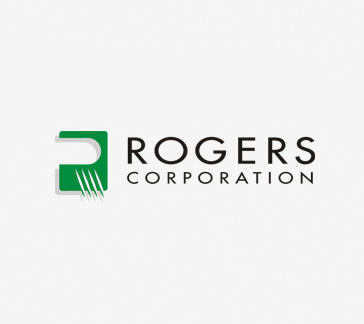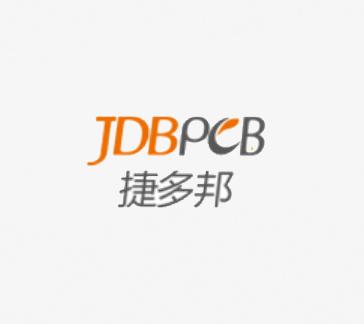Digging Deeper into Dielectric Constant for PCB Materials




The dielectric constant is the first number most engineers consider when sorting through different printed-circuit-board (PCB) materials. It is the number that guides the search, when needing a circuit-board material with a high dielectric constant or when a design requires a PCB material with a low dielectric constant. But what does the dielectric constant really mean? And how can it affect a design if it is not “the right” dielectric constant? What happens to the circuit if it is designed and fabricated on a PCB material with a high dielectric constant and it should have been one with a low dielectric constant?
Many engineers are taught that a circuit material’s dielectric constant, or relative permittivity or Dk as it is also known, is a fixed value for a given material. In truth, the Dk values listed by materials manufacturers on their data sheets are numbers from a specific test method at a specific frequency, and the value will change under different conditions. For this reason, ROGERS Corp. lists Dk values for their materials in reference to specific test methods, but will also provide “Design Dk” values for the materials that represent Dk values for the material under different conditions and values that can be used when designing or modeling a circuit, as in a commercial computer-aided-engineering (CAE) software program.
Several earlier blogs in this series have explored the meaning of the dielectric constant for PCB materials, including the different types of measurements that PCB materials suppliers use to determine the dielectric constants of their materials. The dielectric-constant values of the materials inevitably compare to the dielectric constant of a vacuum, which is one, or the dielectric constant of dry air, which is close to one, which are standard references for understanding dielectric constant. But unlike a vacuum, the measured values of dielectric constant for a PCB material can differ, depending upon the measurement method and the frequency of the measurements.
In practical terms, the dielectric constant of any PCB material will be higher than a vacuum. The size of a circuit’s structure, such as a resonator, will be determined by the wavelength of the frequency of interest. The size of the circuit structure for a given wavelength decreases as the dielectric constant increases. The dielectric constant is often defined by a capacitor formed with a dielectric material and the number of electrons or charges the capacitor can store for a given voltage. Materials with higher dielectric constants can store more charge than materials with lower dielectric constants. In theory, for equivalent performance, circuit dimensions can be made smaller by using a circuit material with a higher dielectric constant.
Numerous articles on selecting PCB materials, including some by this author, have suggested the use of circuit materials with higher-dielectric-constant values to miniaturize a circuit, such as an amplifier.[1] Is the process of miniaturizing an RF/microwave/millimeter-wave circuit simply a matter of switching to a higher dielectric-constant PCB material? Is it that easy? Or are other tradeoffs involved with a move to a higher dielectric constant?
Selecting a PCB material is not simply a matter of choosing a material based on one parameter, such as dielectric constant. If such was the case, circuit designers seeking larger circuits would start with PCB materials having a dielectric constant of 3 or less, while engineers in need of miniaturization would work with PCB materials having a dielectric constant of 10.2 or higher. As will be seen when a future blog takes a closer look at the dissipation factor (Df), choosing a PCB material requires more than just one material parameter. Yes, materials with higher dielectric constants can yield smaller circuits for a given operating frequency or bandwidth but, depending upon the requirements for the circuit or circuits to be fabricated on the material, a smart material choice should consider the dielectric constant along with other key material parameters for that application.
For example, in the article on amplifier design, a jump was not made simply from a low-dielectric-constant material with a value of 3 to a circuit material with a dielectric constant of 10.2. A material with a higher dielectric constant of 6.15 was used (RO4360™ thermoset material from Rogers Corp.) in place of circuit materials with lower dielectric constants, to achieve the circuit miniaturization. The quality associated with the dielectric constant, such as the dielectric-constant tolerance (variations in dielectric constant regarding lot-to-lot consistency) and dielectric-constant variations with temperature, should also be part of the process of evaluating different materials for dielectric constant. For miniaturizing the amplifier, consideration was also given to other important material parameters, such as thermal conductivity. Since an amplifier circuit will generate heat, and improperly managed heat can cause mechanical and electrical variations in a PCB material, the material’s thermal conductivity was considered at least as important as the dielectric constant and its related parameters.
The dielectric constant of a PCB material is formed by the component materials, such as woven glass, ceramic, or polytetrafluoroethylene (PTFE). Circuit designers tend to plan around a specific dielectric constant for material, but should never lose sight of the fact that a circuit material’s Dk is not constant: it will change with temperature and over frequency, and even with the thickness of the material. Any comparison of different PCB materials can never assume constant Dk. It can also not assume that other material parameters remain constant when switching to a material with a higher Dk value.
Most PCB materials are anisotropic, which means that the Dk value is different for different axes of the material. Material data sheets typically provide information on such parameters as Dk tolerance and variations in Dk with temperature. In addition, Rogers Corp. has performed extensive evaluations on its circuit materials and offers curves of dielectric constant versus frequency for most of its materials, from RF typically through lower millimeter-wave frequencies.
Among other things, Rogers’ investigations into material properties have revealed that working with Dk should never be taken for granted. Dk can vary with temperature and frequency, but it can also vary in unexpected, nonlinear ways, especially at lower frequencies. Although Rogers has invested a great deal of time and effort into developing “Design Dk” values for its materials, to represent the dielectric characteristics of the circuit materials under real-world conditions, the nonlinear behavior of dielectric constant can be difficult to track for many circuit materials.
- |
- +1 赞 0
- 收藏
- 评论 0
本文由热心市民小陈转载自Rogers,原文标题为:Digging Deeper into Dielectric Constant for PCB Materials,本站所有转载文章系出于传递更多信息之目的,且明确注明来源,不希望被转载的媒体或个人可与我们联系,我们将立即进行删除处理。
相关研发服务和供应服务
相关推荐
【经验】微波PCB电路结构对比:微带线与接地共面波导谁更胜一筹
在高频电路设计中,需要同时考虑电路的性能变化与物理尺寸。传输线的结构是影响电路性能的关键因素之一,目前主流的传输线结构有微带线和接地共面波导两种。微带线是微波电路中最常用的传输线技术,而且对PCB工艺不敏感,但在毫米波频段时,微带的损耗将增加,适用于30GHz以下频段;接地共面波导则具有牢固的接地结构,在高频频段具备更低的损耗,可应用与更高频段,但设计和PCB工艺难度大。
一文带您了解罗杰斯PCB组装
罗杰斯PCB通常用于高频率电子设备,如无线通信系统、卫星通信设备、雷达系统、微波天线等。它具有低损耗、低介电常数、低介电损耗因子和良好的尺寸稳定性等特点,使其在高频环境下表现出色。那么本文捷多邦小编就聊聊关于罗杰斯PCB组装的相关内容。
【经验】PCB表面镀层对高频电路性能的影响
本文以RogersPCB层压板为例讲述PCB表面镀层电路导体损耗从低到高依次为裸铜结构、沉银、浸锡、浸金、化学镍金,需要根据应用频率和成本方面综合考虑
ROGERS层压板/高频板选型表
罗杰斯/ROGERS提供以下技术参数的层压板/高频板选型,超低损耗,低至0.0004(Df) ;超大尺寸:54inchX24inch、52inchX40inch、50.1inchX110inch 等;丰富介电常数:2 -12.85 (Dk);超薄介质,低至1mil
|
产品型号
|
品类
|
产品系列
|
介电常数(Dk)
|
正切角损耗(Df)
|
介质厚度(mm)(mil)
|
导热系数W/(m·K)
|
铜箔类型
|
铜箔1厚度
|
铜箔2厚度
|
尺寸(inch)
|
|
5880LZNS 24X18 H1/H1 R4 0100+-001/DI
|
层压板
|
RT/duroid® 5880LZ
|
2
|
0.0027
|
0.254mm(10mil)
|
0.33
|
电解铜
|
H1
|
H1
|
24X18
|
选型表 - ROGERS 立即选型
罗杰斯PCB的应用、选材、材料参数精彩问答汇总
罗杰斯公司整理精彩问答汇总,内容涵盖了PCB的应用、选材、材料参数等多个方面,收到不少工程师反馈认为非常实用。
【产品】5G时代的高频板材初探——罗杰斯PCB板
随着电子技术的越来越发达。电子产品的生产对材料的要求也越来越多。5G时代必须利用高频频段,导致其必须有匹配的硬件材料,比如高频材料。以罗杰斯为例。罗杰斯PCB板材料是Rogers公司生产的一种高频板材型号,不同于常规的PCB用板材环氧树脂,它中间没有玻纤是以陶瓷基高频材料。
PCB上大面积覆铜散热,这种方式可不可取了?散热后温度大概50度左右,长时间运行板子会不会变形?
PCB大面积覆铜是散热方法之一,除此之外,还可以采用加散热器,采用高导热系数的板材比如ROGERS的92ml,具体资料见 https://www.sekorm.com/doc/180969.html
pcb主要材质有哪些?包含哪些元素?它们的CAS号是多少
ROGERS公司的PCB板材主要材质有PTFE、陶瓷、玻璃布、碳氢化合物(树脂)、铜箔,主要元素有C、H、O、Si、Al、Cu等,CAS号比较容易查询到,板材与半固化片选型资料:【选型】Rogers(罗杰斯) 高频印刷线路板材料选型指南
【技术】PCB层压板的铜箔介绍
PCB行业中使用的铜箔一般有压延铜箔(rolled annealed copper, RA)或电解(ED)铜箔两种。压延铜箔的工艺制造从纯铜坯料开始,不断碾压缩减厚度,最终缩减成需要的理想厚度的铜箔。
解析罗杰斯PCB的4大特点:低介电损耗、高频性能、热稳定性和机械强度
ROGERS罗杰斯PCB是一种特殊的PCB电路板,它采用罗杰斯材料制造而成。罗杰斯材料是一种高性能、多层、热稳定的复合材料,由玻璃纤维和聚酰亚胺树脂构成。本文中捷多邦小编就与大家聊聊罗杰斯pcb的4大特点。
【选型】如何为Ku波段卫星通信设备选择合适的PCB材料
罗杰斯公司针对Ku频段的卫星通信应用,提供高性价比RO4350B和高性能RO3003两种PCB材料解决方案。RO3003适用于性能要求较高的国防和航天级的Ku波段卫星通信应用;RO4350B可用于对成本要求较高的民用级Ku波段卫星通信设备。
ROGERS分享毫米波雷达设计中需考虑的PCB材料的基本特性精选问答
为了帮助客户了解与汽车和工业PCB雷达应用相关的关键要素,罗杰斯公司在线上技术讲座中与大家充分交流了「毫米波雷达设计中需考虑的PCB材料的基本特性」的话题,本文也将大家共同关心的问题整理成精选问答,供您参考。
常见的PCB板材有哪些?都有什么优缺点?比如FR-4外还有哪些?
一般PCB板材有如下分类:1.94HB:普通纸板,不防火(最低档的材料,模冲孔,不能做电源板)2.94V0:阻燃纸板 (模冲孔)3.22F: 单面半玻纤板(模冲孔)4.CEM-1:单面玻纤板(必须要电脑钻孔,不能模冲)5.CEM-3:双面半玻纤板(除双面纸板外属于双面板最低端的材料)6.FR-4: 双面玻纤板,一般的FR-4与高Tg的FR-4的区别:是在热态下,特别是在吸湿后受热下,其材料的机械强度、尺寸稳定性、粘接性、吸水性、热分解性、热膨胀性等各种情况存在差异,高Tg产品明显要好于普通的PCB基板材料。向您推荐:Rogers(罗杰斯) 先进线路板材,详情请参考: Rogers(罗杰斯) 先进线路板材,希望对您有帮助
【技术】PCB层压板的Dk究竟如何确定?
众所周知Dk(介电常数)是最重要的电路材料参数之一,而电路层压板材料的Dk值可通过不同的测试方法确定,一般情况下都是是采用VNA(矢量网络分析仪)来获得测试参考电路的幅度和相位特性计算出Dk。
LPA2104S 3W无滤波器单声道D类音频功率放大器
描述- LPA2104S是一款高效的无滤波器单声道D类音频功率放大器,具有低失真和高效率的特点。该设备仅需少量外部组件,可直接驱动扬声器,节省PCB面积和系统成本。它提供外控增益和开关时间,并具备短路保护和过热保护功能。
型号- LPA2104SSOF,LPA2104S,LPA2104S□□□
电子商城
品牌:ROGERS
品类:High Frequency Laminates
价格:¥6,066.0910
现货: 50
现货市场
服务
可加工PCB层数:1-30层;板材类型:FR4板/铝基板/铜基板/刚扰结合板/FPC板/高精密板/Rogers高频板;成品尺寸:5*5mm~53*84cm;板厚:0.1~5.0mm。
最小起订量: 1 提交需求>
可定制PCB最高层数:32层;板材类型:罗杰斯高频板/泰康尼高频板/ZYF中英天线板/F4B高频板/高频电路板/高频混压板/高频纯压板等;最大加工尺寸:609*889mm。
最小起订量: 1 提交需求>











































































































































































































登录 | 立即注册
提交评论